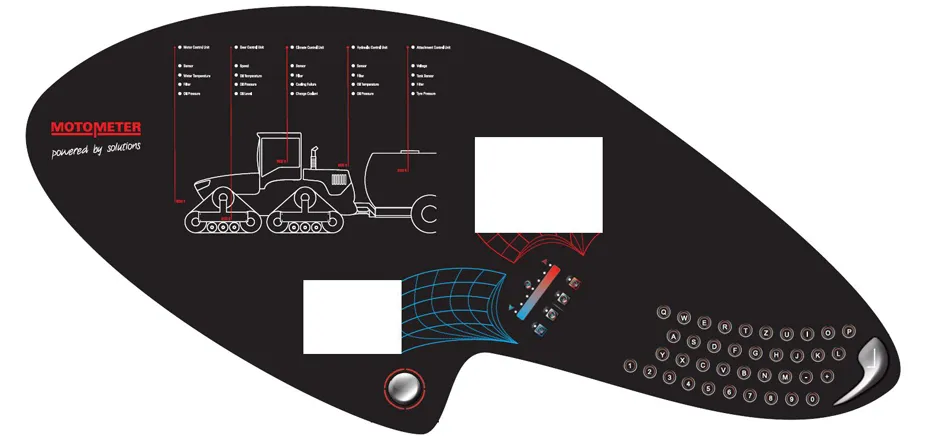
Research has been conducted in Europe and Australia to reduce the number and severity of injuries and fatalities incurred from collisions with roadside barriers, including motorcyclists. However, to date, little has been done to address the issue in the United States.
Injury countermeasures: shielding motorcyclists from the posts of the guardrail is an effective way to reduce the severity of injuries and the fatality rate since posts are the most hazardous component. The I-beam shaped post is the most commonly used; however, it also contains the most edges and narrow faces. The key things are to reduce the chances of collisions with such faces and to spread/absorb impact energy. For example, SEC-Envel metal shields have been used in France since 1997 and approximately 500km were installed across France by the year 2000 (
Metal shield developed by SEC-Envel. The flexible metal covers the hazardous posts and prevents motorcyclists from colliding with them (FEMA, 2000 [above left] and Limi et al., 2008 [above right]).
The Plastrail by Sodilor is another guardrail modifier made in France. The Mototub by Sodirel is similar to the Plastrail; however, it is fabricated from 70% recycled material (FEMA, 2000).
Neopolene impact attenuators significantly reduce the severity of injuries, though they are most effective in collisions occurring between 50 and 60km/hour (Domhan, 1987). In testing done with cadavers it was found that the injuries were significantly less severe when impact attenuators were used (Jessl, 1985 and Schuler, 1985, cited in Duncan et al., 2000). The shape of the post itself can also be altered to reduce energy concentration and thus the severity of an injury caused upon collision. Posts with cross sections other than 'I' have been used to reduce the severity of injuries (Duncan et al., 2000).
Cost and Feasibility: it is not economically beneficial to modify all guardrails to be motorcycle friendly. However, if only ten percent of guardrails were made motorcycle friendly, the additional safety measures would be cost effective (Domhan, 1987).
Thus, black spots need to be targeted for barrier improvement. For example, in Germany several stretches of roadway seen to be hazardous were equipped with improved barrier systems. But other actions must be taken in conjunction, because barrier improvements are too expensive to implement on every guardrail.
International Motorcycle Initiatives: a stretch of Highway RV 32 in Norway was opened this year, modified to incorporate safety measures for motorcyclists that are usually overlooked in road design (FEMA, 2008). France has allocated over
E5 million/year to improve crash barriers around hazardous curves, and for the fitting of motorcycle friendly devices in blackspots. Utrecht in the Netherlands decided to install only motorcycle friendly barriers when new barriers are erected (Baird et al., 2005). If the United States were to take similar action, the severity of motorcycle crashes, as well as the frequency of fatal motorcycle crashes, could be significantly reduced. The information and technology is available in order to make a difference; however, the initiative needs to be taken.
Recommendations: the guardrail issue has not gained widespread attention in the United States and the seriousness of this issue needs to be emphasized in order for it to gain recognition. Guidelines have been established by the
However, of the 224 motorcyclists fatally injured from a guardrail collision in 2005 in the United States, more than two-thirds were wearing their helmets (Gabler, 2007). Thus, helmet usage is not the best preventative measure in the event of a guardrail collision. Though the preventative measures being taken are effective, other means of protecting motorcyclists must also be considered. Raising the awareness of the issue in the United States, as the Federation of European Motorcyclists' Associations (FEMA) has done in Europe, would lead to more protective efforts.
Regulations need to be set that consider motorcyclists in the design and testing of barriers. Motorcyclists have not, thus far, been considered in the international standard testing methods of roadside barriers (Gowan, 1996, cited in Duncan et al., 2000). But, in 2005 Spain pioneered the development of a barrier-motorcyclist crash test which takes the first step toward such an international standard (Perandones et al., 2008). Aside from regulations providing safety to motorcyclists, implementing motorcycle safe barriers from the beginning of a project would be cost effective. With proper safety measures taken, the need to revisit a road to make modifications is eliminated, reducing future construction costs.
Conclusion: barriers have been proven to be extremely beneficial to car occupants, but these barriers could cause more severe injuries to motorcyclists than would be incurred if the barrier was not present. Implied barrier modifications are used mostly in Europe. The United States needs to start protecting its own motorcyclists, modifying barriers in black spots, increasing awareness of the issue at home, and setting regulations on barriers to ensure that new barriers are motorcycle friendly. The means of protecting hundreds of people each year exist. They need to be acted upon in order to start saving lives.
Galileo and EGNOS discussion
The first MENTORE event 'Galileo & EGNOS for Public Interest Services'on 25 November in Brussels, Belgium, will show the contribution to services of public interest brought by Galileo and EGNOS; discuss and forecast a regulatory scenario for GNSS and tackle key issues such as privacy in regulated services, liability and Service Level Agreements.
For more information contact the MENTORE Secretariat:
Tel: + 32 2 644 58 77
Fax: + 32 2 647 59 34
Email: %$Linker:
http://%$Linker:








